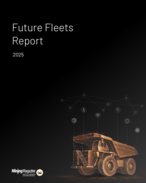Researchers said the trees can tackle three of Australia’s greatest environmental challenges - salinity, renewable energy and greenhouse emissions.
The trees will be grown in belts in agricultural areas to control dryland salinity by lowering groundwater tables, and reducing greenhouse gases by absorbing CO2. They will also produce valuable oils, timber, charcoal and activated carbon, under a project developed by partners in the CRC for Plant-Based Management of Dryland Salinity (CRC Salinity).
The use of charcoal from the mallee timber as a reductant for making iron and steel is being tested by the CRC for Sustainable Resource Processing (CSRP).
CSRP chief Stevan Green said new research indicated mallee charcoal could be a viable replacement for coke (made from coal) in a bath iron-smelting process.
Studies by CSRP show that if 20% of the coke used to make iron is replaced with charcoal, then non-renewable energy use falls by 13%, as does the overall global warming potential.
If coke is totally replaced by charcoal, non-renewable energy consumption and greenhouse potential both drop by at least 60%, CSRP said.
Reserchers said one drawback is that charcoal is not quite so efficient at reducing iron as coke, but recent work by CSIRO into the physics of the reaction gives promise that this obstacle can be overcome through fine-tuning the conditions under which fuel is injected into the slag bath.
























